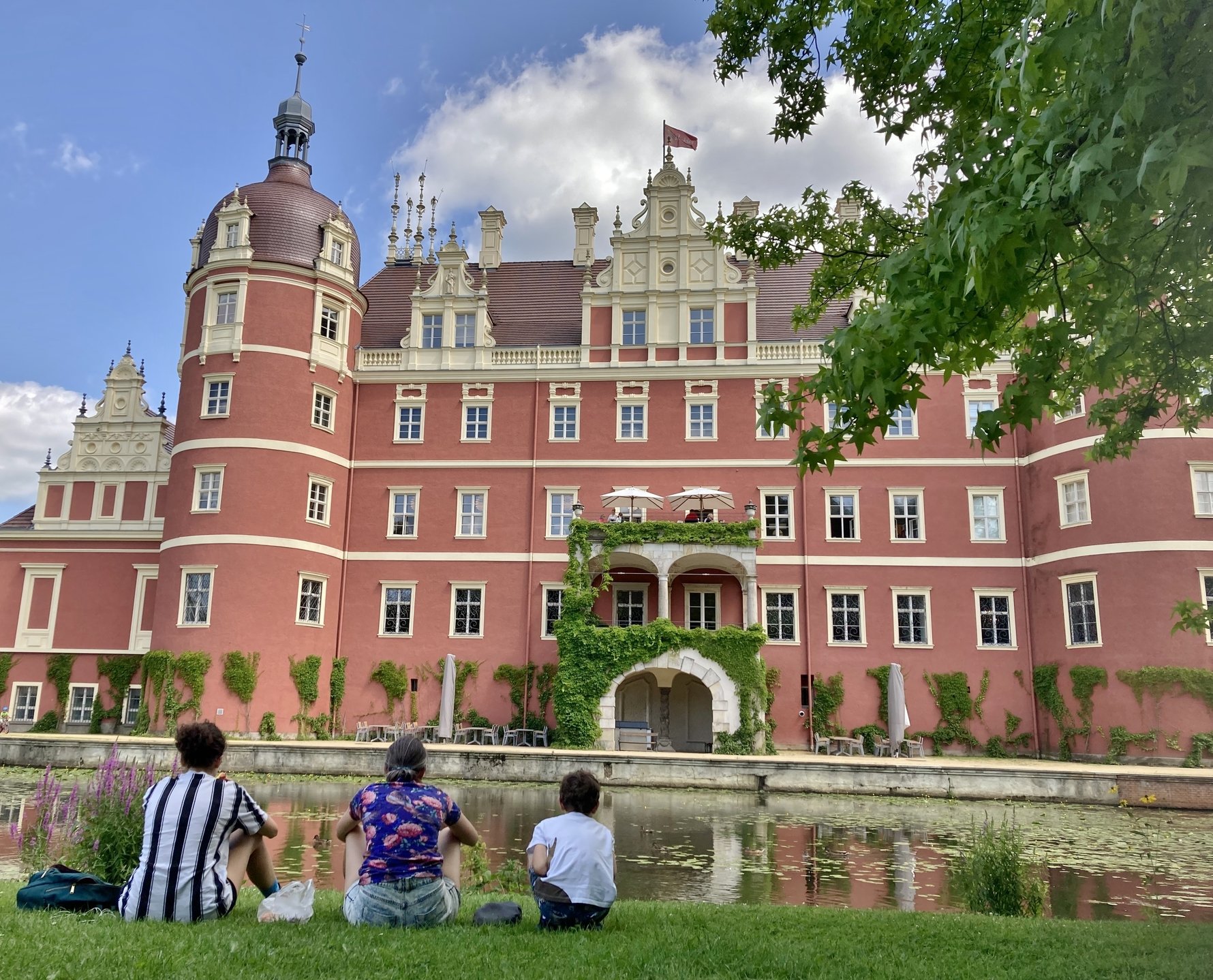
Prince Pückler & the Origin Story of Muskau Park
The site of a strategic fortress first mentioned as far back as the 13th century, in 1811 the Muskau estate - then the largest estate in today’s Germany - was inherited by Hermann von Pückler-Muskau. Born in Muskau in 1785, Pückler-Muskau was a liberal and eccentric German nobleman of many talents, who courted adventure, controversy and fame throughout his life. After studying in England, he became obsessed with parkland landscaping and upon returning to his estate in 1815 he announced to the inhabitants of Muskau that he intended to redesign the town’s centre and transform its surroundings into a landscape park which would envelope the town “in a way not done before on such a grand scale.”Having laid out the entire design and established an international school of landscape management on-site, work began in earnest in 1817. The moat of the medieval fortress was removed, a new branch of the Neisse river was dug on the western (now German) side, and the centre of the complex was reconstructed as a Neo-Renaissance palace (now known as the ‘New Castle’). One of many separate areas within the park, this most developed section known as ‘Castle Park’ - which also included the ‘Old Castle’, stables, orangery, greenhouses and gardens - would be the compositional centre of the park from which the rest would extend outward. Numerous objects were also built on the eastern (now Polish) side of the river, and trees were planted over vast areas.
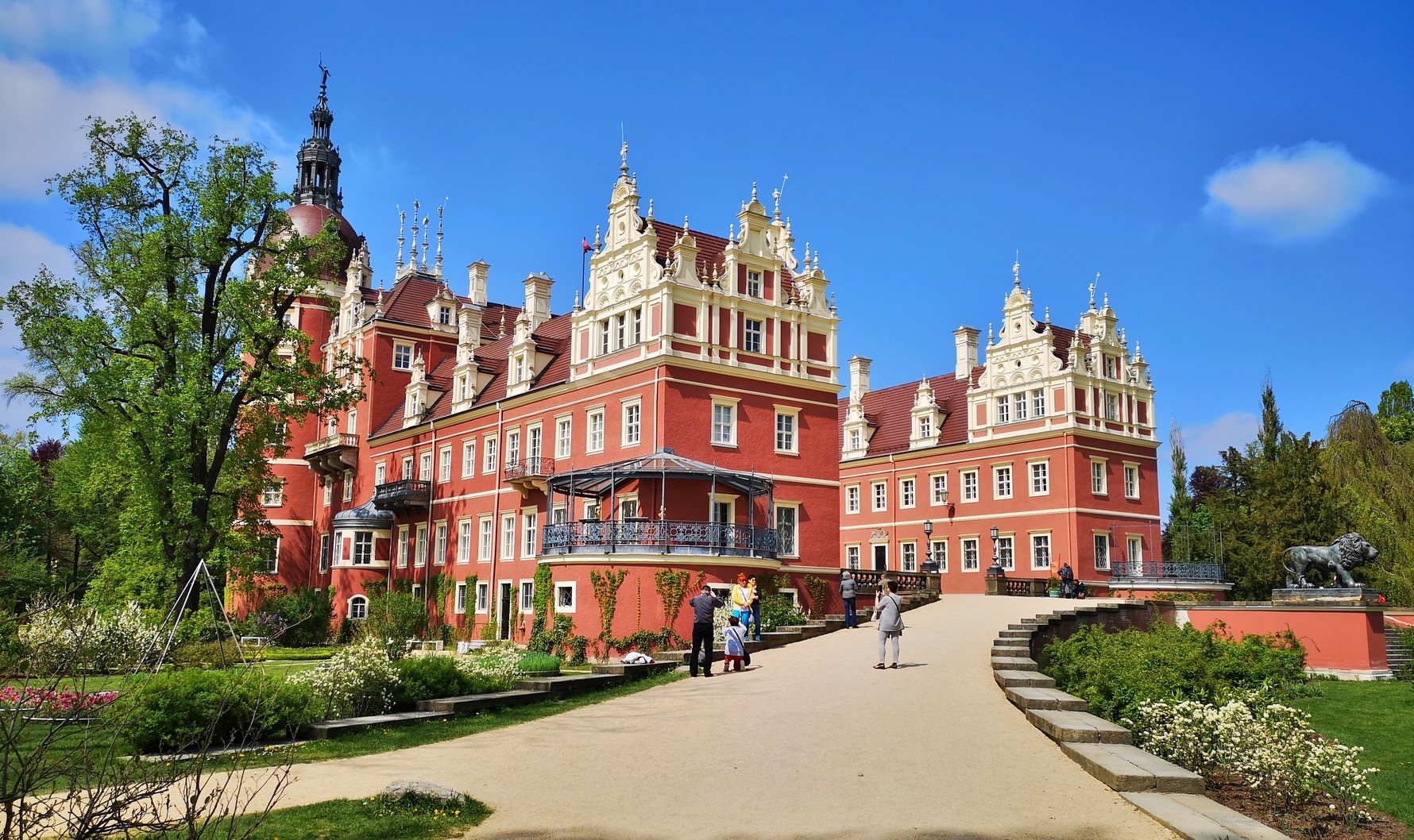
The costs of this project were enormous and many believed that Pückler-Muskau’s main motivation for marrying his rich wife, Lucie von Pappenheim - nine years his senior and over 40 (a ripe old age in those days) - was to help finance his vision. In fact, she was soon as obsessed with and involved in the project as he was, and with their assets rapidly expiring, the couple - who would remain faithful to each other until the end of their lives - actually divorced in 1826 explicitly so that Hermann could go to England and marry a new benefactor for their park. This he failed to do, and the costs of creating the park, combined with their lavish lifestyle and Hermann’s extensive travels, eventually became too much to overcome. After 30 years of work, the couple sold Muskau Park in 1845 and moved to their estate in Branitz, where they actually set to work creating another incredible landscape park in their 60s and 70s. Although smaller than Muskau Park, Hermann described Branitz Park as his masterpiece and he and Lucie are both buried in a monumental earthwork pyramid within a lake within the park.
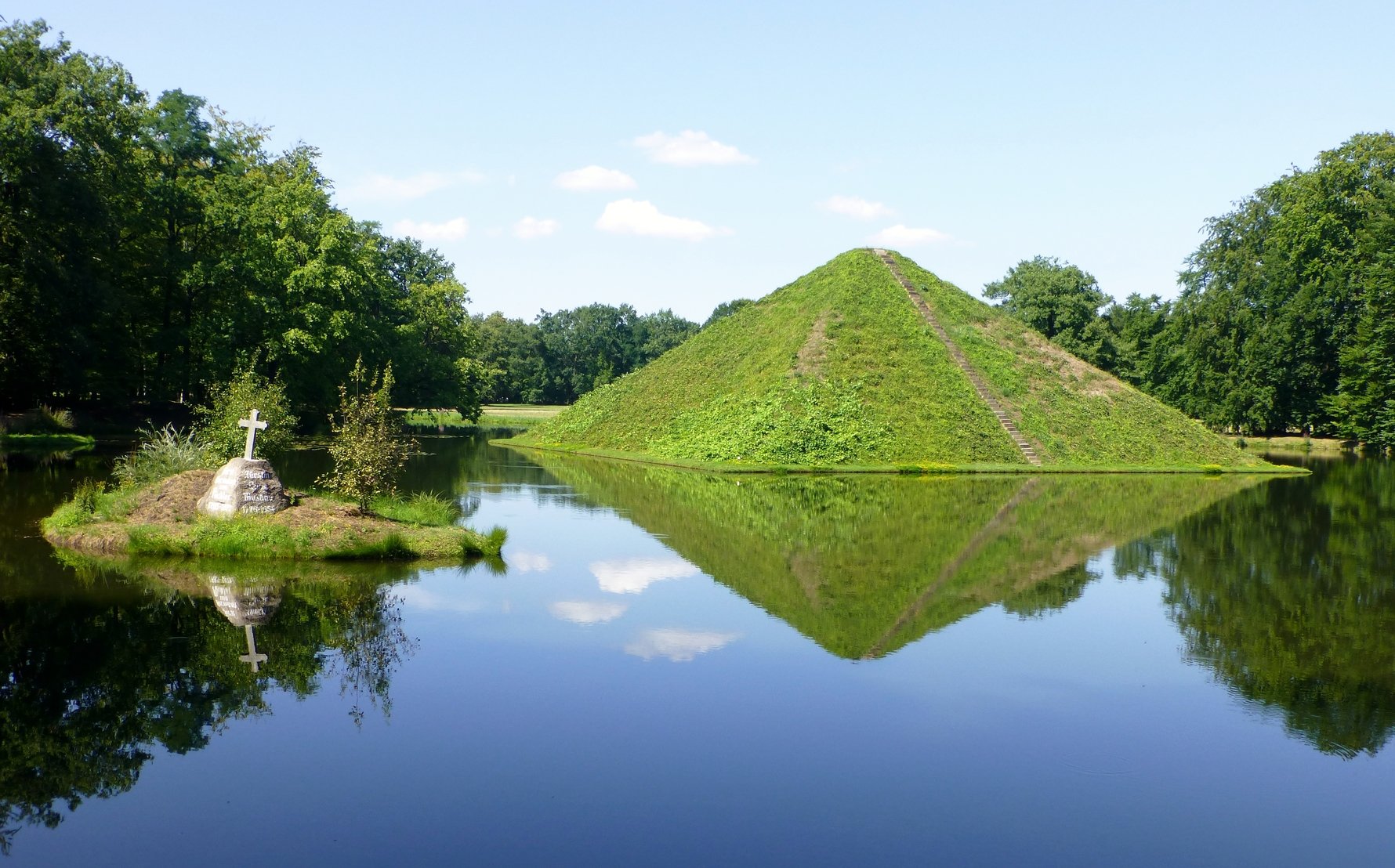
Post-Pückler History of Muskau Park
At the time of its sale, the basic outline of the park had been completed; its planned size of 728ha had been achieved, but of this the Pücklers had only fully developed 250ha. The subsequent primary owners of the park estate - Duke Frederik of the Netherlands (owner from 1847-1881), followed by the Arnim-Muskau family (1883-1945) - deserve much of the credit for the park we enjoy today. These owners engendered a century of stability at the park, respected the original owners’ vision and faithfully continued its tradition by retaining much of the original staff and architects. The original buildings were carefully maintained and renovated, the gardens were expanded, Pückler's unrealised Spa Park was created, the arboretum in the eastern part of the park was planted, bridges and numerous other buildings were added - most of which were actually in Pückler’s original design.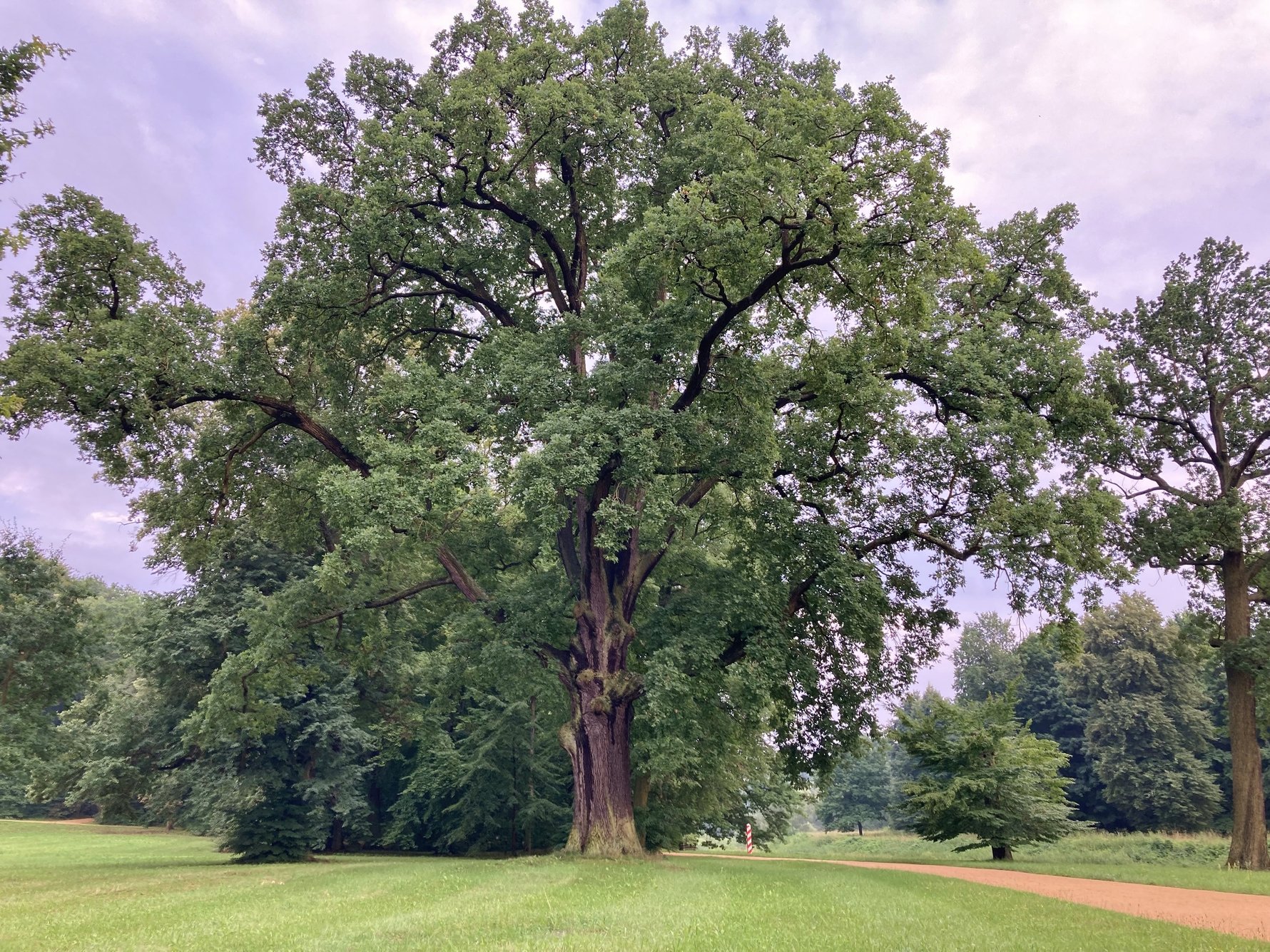
World War II and its aftermath had a huge impact on the park as both castles and all four bridges were blown up, the Armin family was dispossessed and the new German-Polish border was created right through the centre of the park. With most of the park’s infrastructure now on the German side, it was able to operate independently as a health resort, with Muskau becoming the spa town Bad Muskau (literally ‘Muskau Spa’). On the Polish side, the town of Łęknica was established and the parklands became state property, with some of them unfortunately cultivated for agriculture, though otherwise undeveloped.
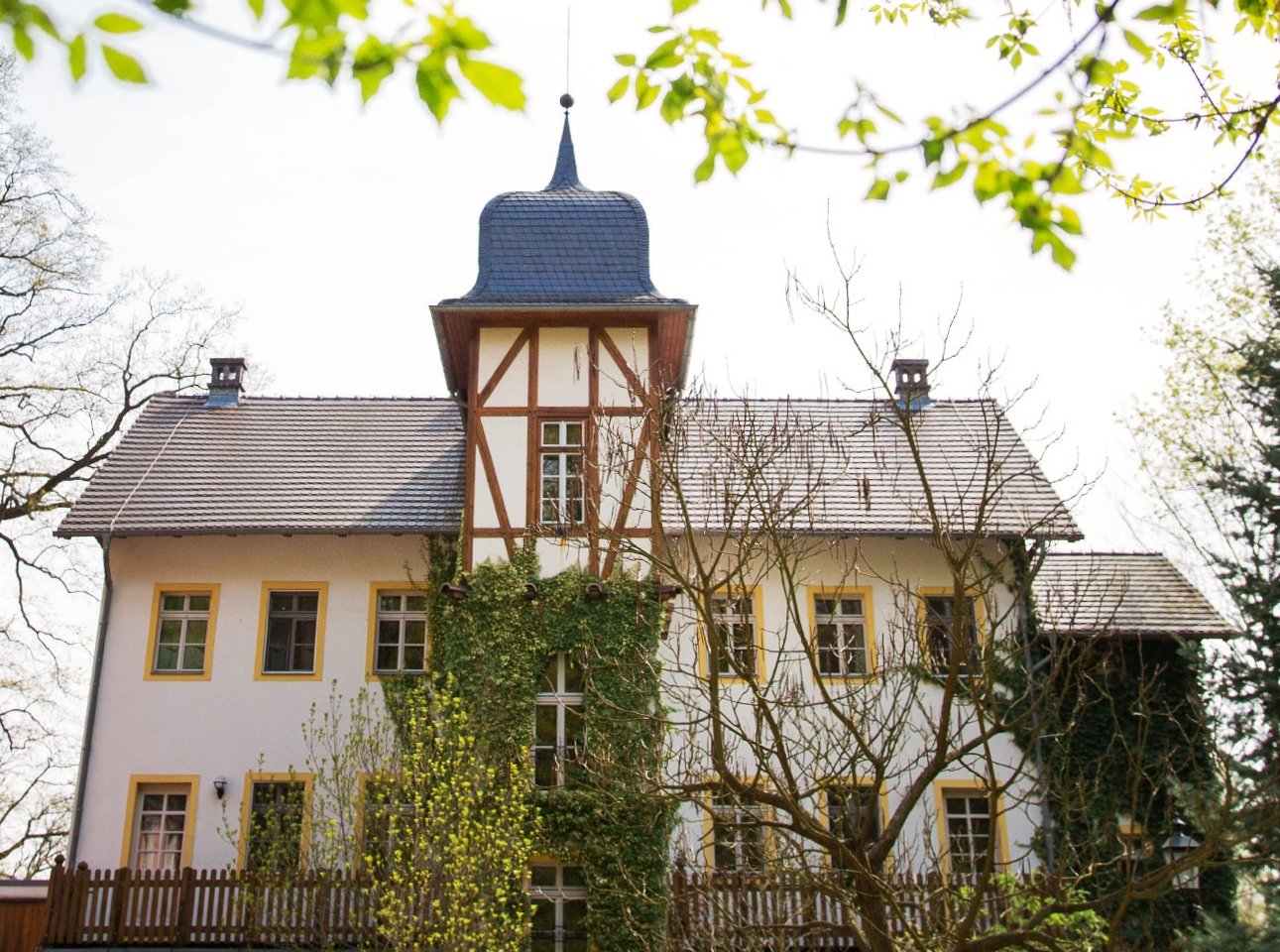
After the fall of the Berlin Wall, an unprecedented period of mutual cooperation began as both sides of the park were rejoined and are now managed together by Germany and Poland. Many of the buildings have again been restored, bridges have been rebuilt and tourists can freely cross from one side to the other without a thought.
Visiting Muskau Park
Today Muskau Park covers 2.1 square kilometres in Germany, and 3.5 in Poland. Nonetheless, it can feel as if the park is mostly in Germany due to the western side being more developed and leading directly into and around the small charming town of Bad Muskau. On the Polish side, the town of Łęknica feels more adjacent than incorporated into the territory of the park, and largely consists of the wooded ‘Park on the Terraces’ which occupies a hill overlooking ‘Castle Park’ on the German side. When you are inside the park, however, you are inside the park and there is no sense of borders or sides thanks to several bridges and the magical atmosphere of the place.
To give this amazing place its due requires two days of exploration, and that’s without taking into consideration other places in the area worth visiting like the Babina Quarry Trail in Łęknica and the Azalea and Rhododendron Park in Kromlau, just 15mins away by car (or take the historic narrow-gauge railway). As such we recommend spending three days in the area if you can.
Pets are welcome in Muskau Park and the park can be visited individually or in a group on foot, by bike, in a horse-drawn carriage, or on a guided tour in Polish, English or German. You can even go on float trips down the river. Info about all of these services is available online, just note that the Park somewhat confusingly has two separate websites: the Polish-oriented parkmuzakowski.nid.pl and German-oriented muskauer-park.de.
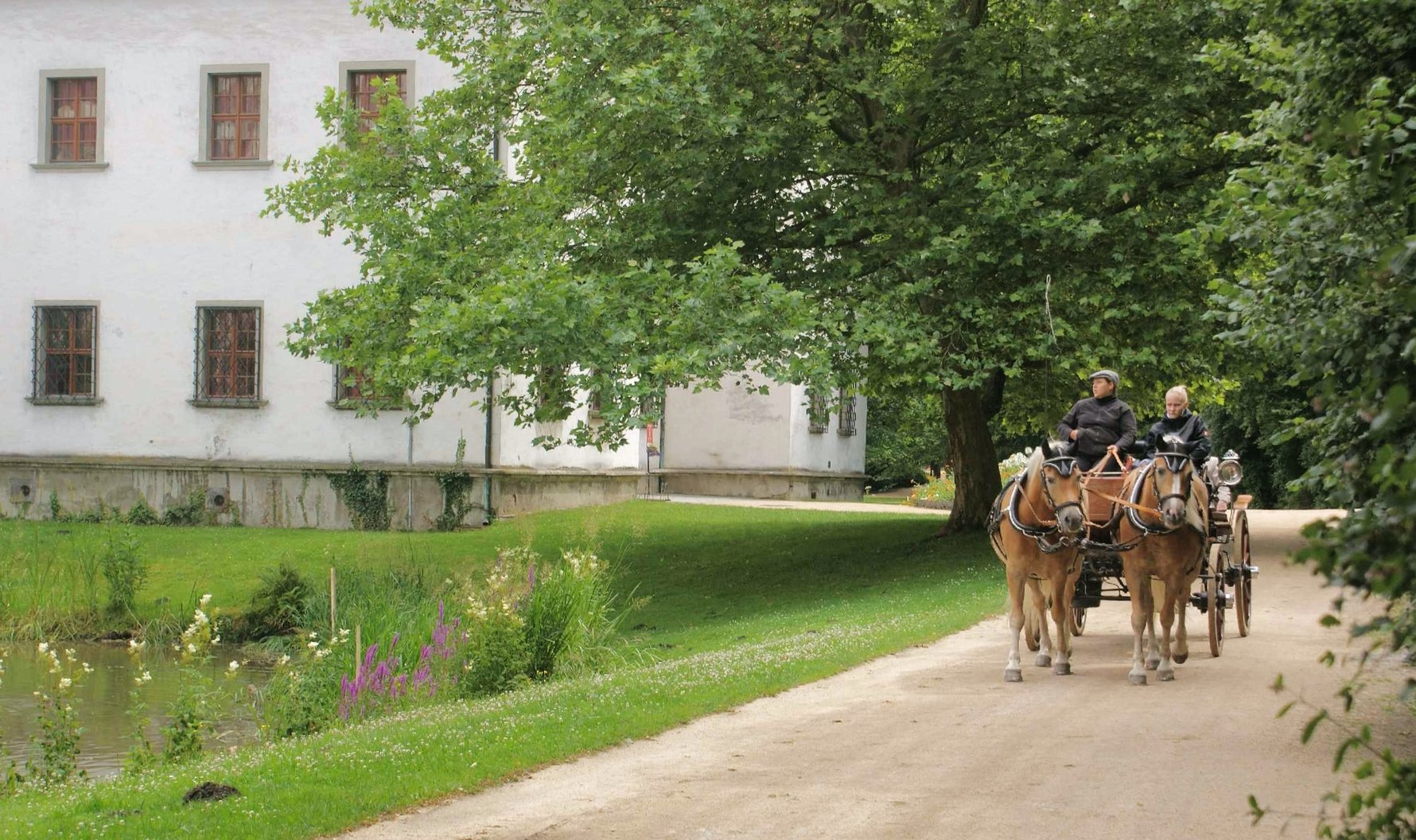
Entry & Tourist Information
The park is free to enter and has many entrances which are open at all times. The best place to enter if you have a car is from ul. Wybrzeżna in Łęknica, where there is a paid parking lot (13zł/day), a tourist information point where it’s vital to pick up a map (ul. Hutnicza 19; open April to October only, Wed-Sun 10:00-17:00), and also a bike rental point.Tourist information can also be found in the New Castle on the German side (open April to October 10:00-18:00, November to March 10:00-17:00). This is probably the best point for finding out all of the areas that are open to tourists during your visit.
Bike Rental
Exploring the park by bike for at least one day is recommended if you really want to see most of it, and having a bike is also convenient for seeing Łęknica’s anthropogenic lakes via the Babina Quarry Trail. Bike rental is available at the Polish entrance on ul. Hutnicza 19 in Łęknica, inside the park at the Estate Farm (Folwark) on the German side, and also from ‘Camping Family Łęknica’ in nearby Nowe Czaple (near the Babina Quarry trailhead and within easy biking distance of Muskau Park).Worth Seeing & Doing
The most essential places for tourists in Muskau Park are the New Castle and the Estate Farm (Folwark) complex, both on the German side of the river. Inside the New Castle, a permanent exhibit devoted to Prince Pückler (8/4 Euros) offers a fascinating look at the park’s roguish and eccentric founder, and you can also climb up the Castle Tower (4/2 Euros) for a fantastic perspective on his life’s work. In addition to tourist info and souvenirs there is also a cafe in the New Castle, with a lovely terrace where you can rest and recaffeinate.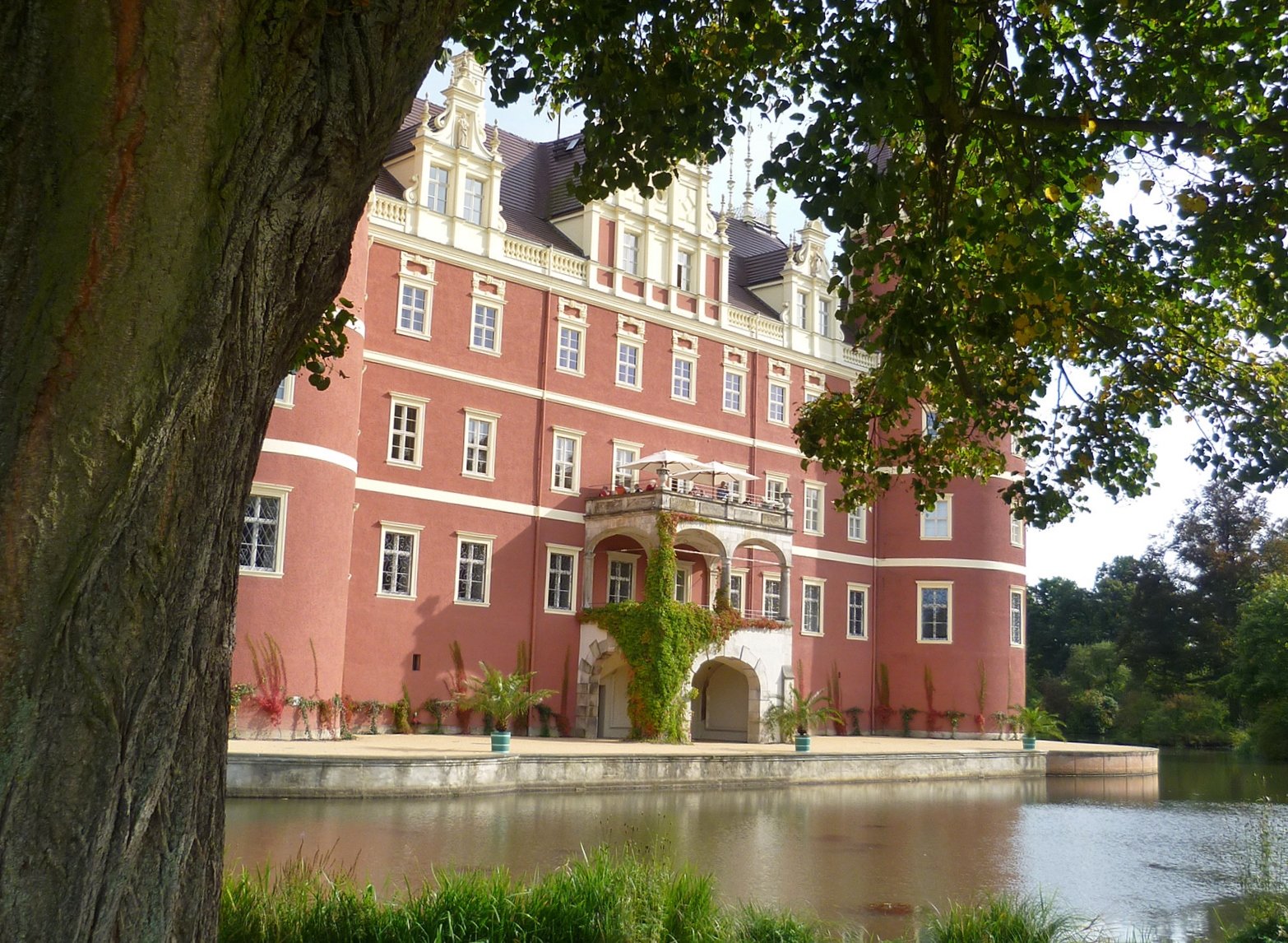
The Estate Farm complex, meanwhile, includes a variety of buildings from different time periods that were meant to be the economic part of the estate. These include the Gothic-Moorish-style orangery (now a banquet hall and conference centre), the royal stables, the kitchen gardens, greenhouses and nursery, where you should seek out the pineapple room - the fruit has been historically grown here and the tradition continues today! Many of these buildings are accessible to visitors today in the form of a cafe, souvenir shop, pottery workshop, bike rental and water equipment rental.
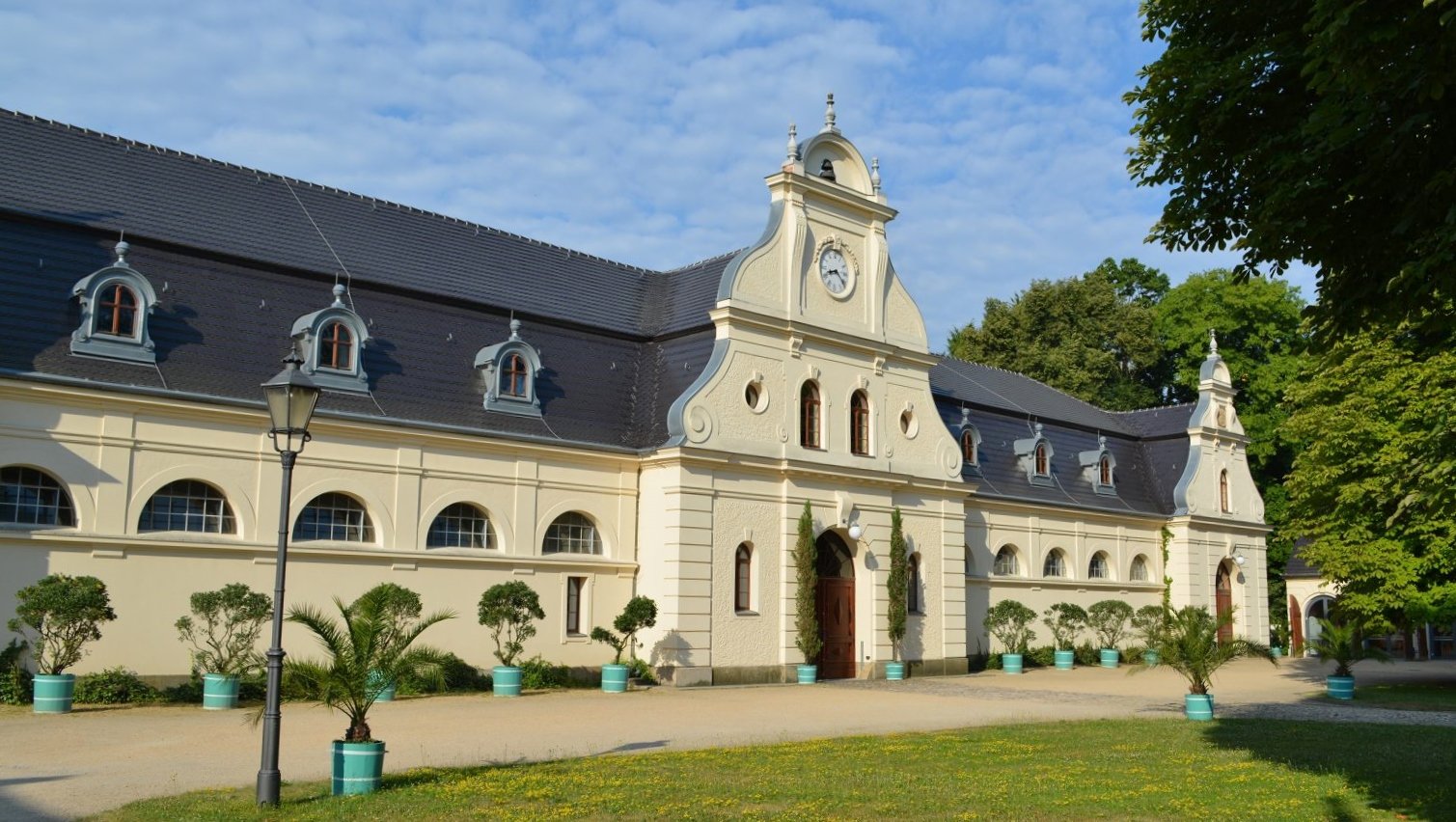
Once you’ve seen the core of the park, visit the ‘Park on the Terraces’ to see some simply incredible oak trees and several characteristic historic bridges - the Royal Bridge, Arcade Bridge and the Viaduct.
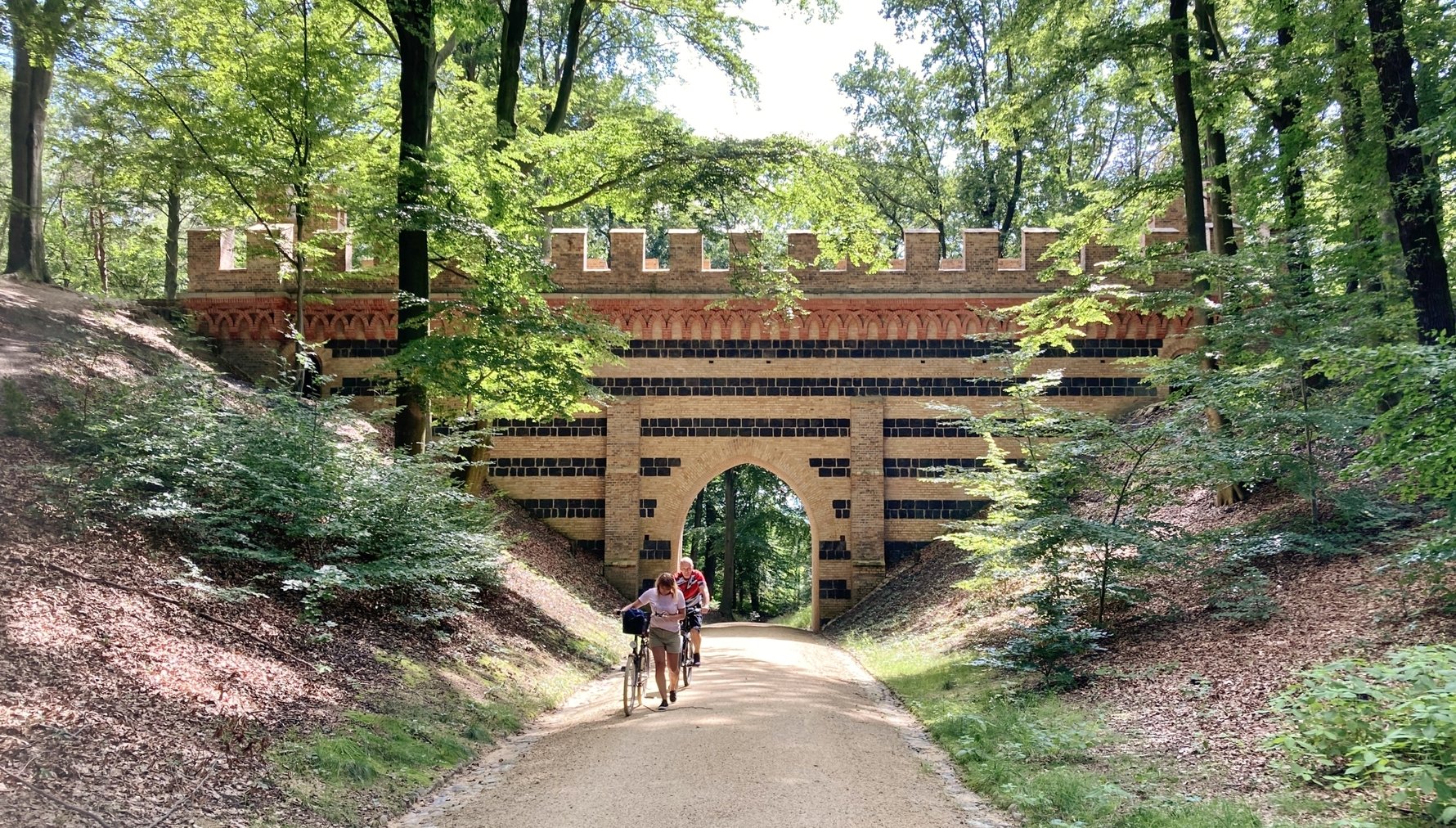
A proper examination of the map won’t fail to notice the southern part of the park, which continues along the river on the other side of Bad Muskau’s main street. The ‘Spa Park’ is in the foothills of this area and features many original villas and historical buildings that were opened in 1823. It’s also from here that you can catch the historic ‘Forest Railway’ - a narrow-gauge train that runs all the way to Weisswasser through the beautiful Muskau Bend Geopark. Most days the railway runs diesel locomotives, but also a steam engine on special days. If you have time to visit the Azalea & Rhododendron Park in Kromlau, this is a wonderful way to do it.
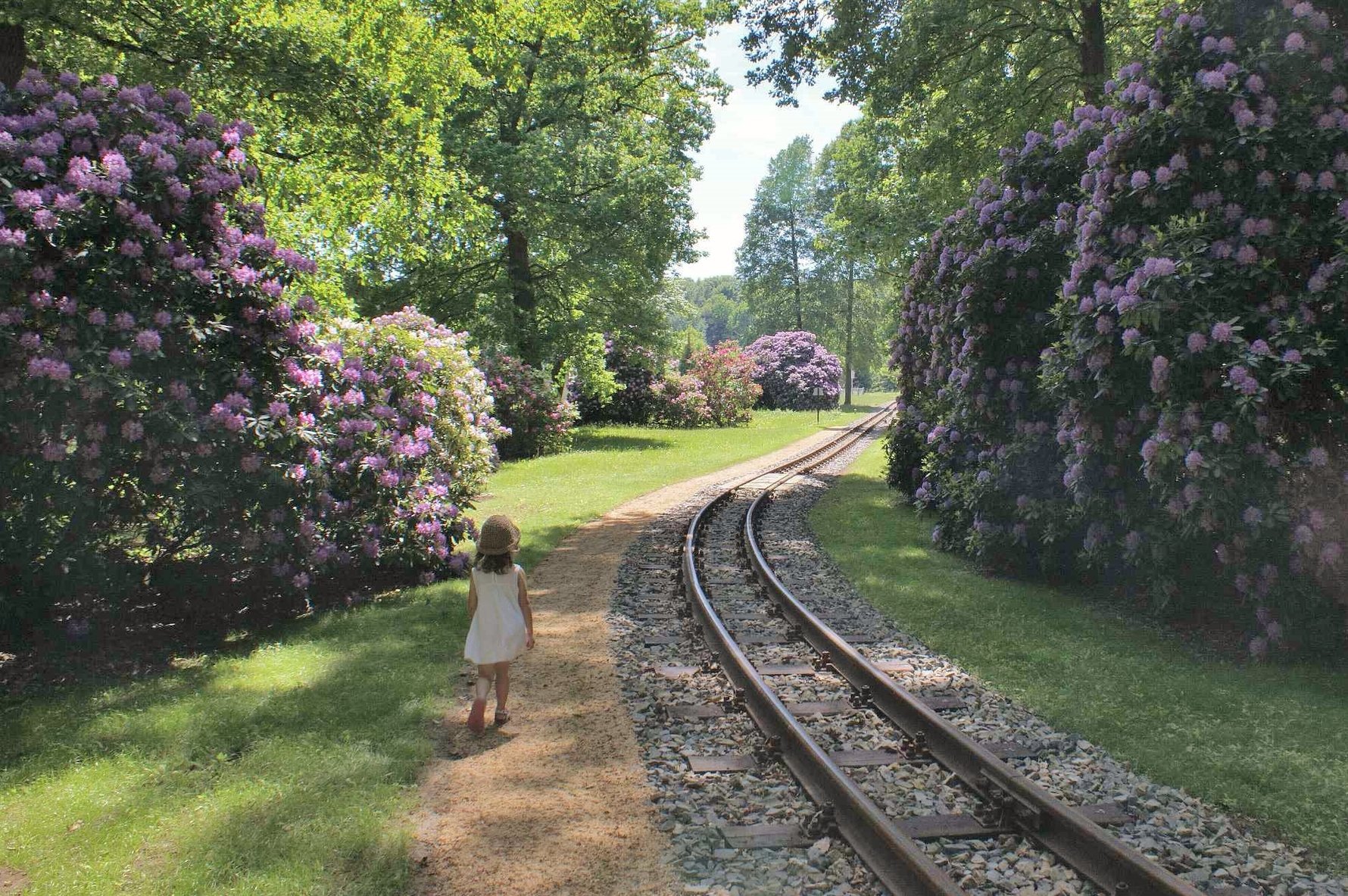


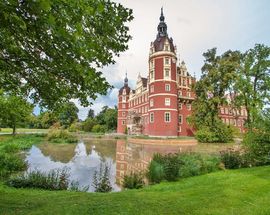
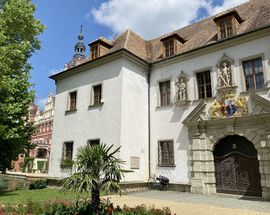
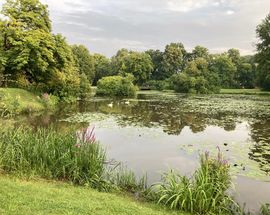
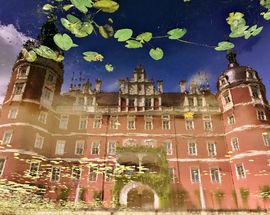
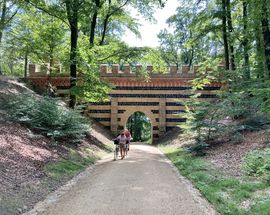
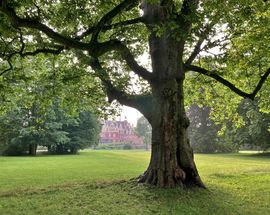
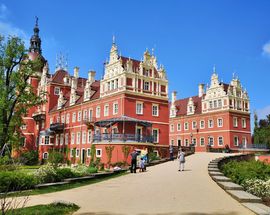
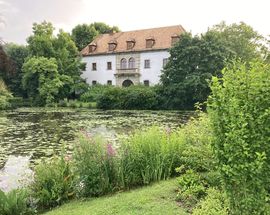
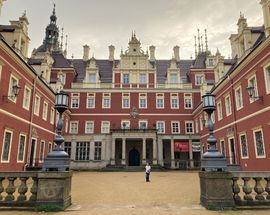
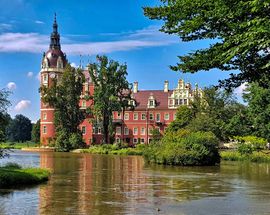

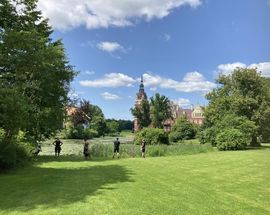
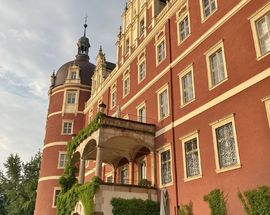
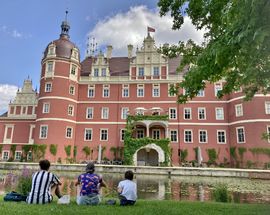

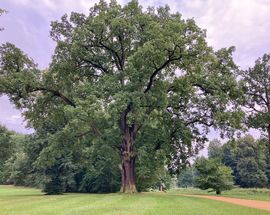
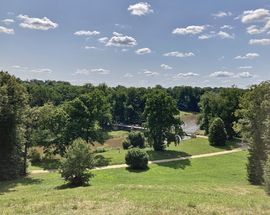
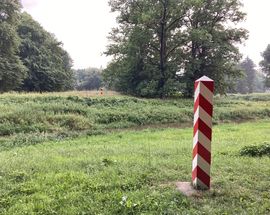
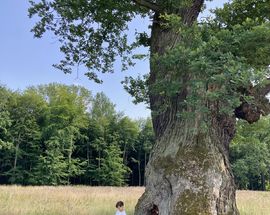
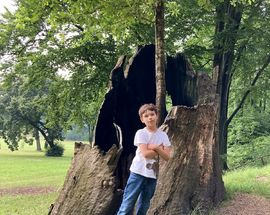
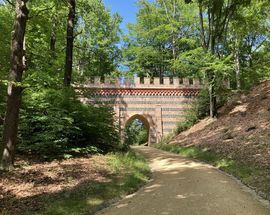
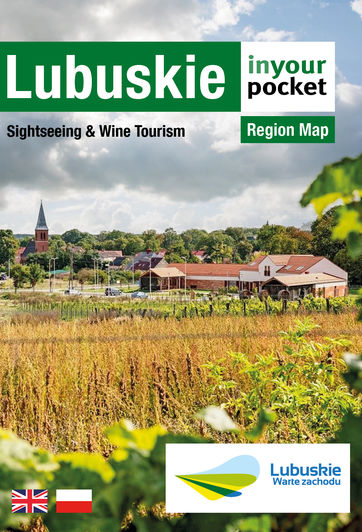
Comments